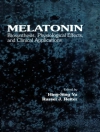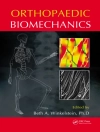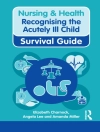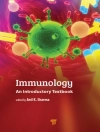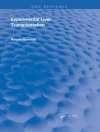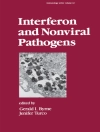Cellular and Molecular Pathology of the Liver is extensive, complex and ranges from the understanding the basic molecular mechanisms that dictate everything from liver homeostasis to liver disease. Molecular Pathology of the liver is complicated due to some of the important functions inherent and unique to the Liver, including its innate ability to regenerate and the multitude of functions it plays for the wellbeing of an organism. With all this in mind, Molecular Pathology of Liver Diseases is organized in different sections, which will coherently and cohesively present the molecular basis of hepatic physiology and pathology. The first two sections are key to understanding the liver anatomy and physiology at a cellular level and go on to define the molecular mechanics in various liver cell types. These sections also cover the existing paradigms in liver development, regeneration and growth. The next section is key to understanding the Molecular Pathology unique to liver diseases and associated phenotypes. The final sections are geared towards the existing knowledge of the molecular basis of many common and uncommon liver diseases in both neoplastic and non-neoplastic areas including pathologies associated with intra-hepatic and extra-hepatic biliary tree. Thus, this textbook is a one-stop reference for comprehending the molecular mechanisms of hepatic pathobiology. It is clearly unique in its format, readability and information and thus will be an asset to many in the field of Pathology and other disciplines.
Tabela de Conteúdo
Molecular Basis of Hepatic Physiology.- Gross and Cellular Anatomy of the Liver.- Liver Zonation.- Hepatocytes.- Biliary Epithelial Cells.- Stellate Cells.- Kupffer Cells.- Sinusoidal Endothelial Cells.- Carbohydrate Metabolic Functions of the Liver.- Protein Metabolic Functions of the Liver.- Fat Metabolic Functions of the Liver.- Detoxification Functions of the Liver.- Synthetic Functions of the Liver.- Bilirubin Metabolism.- Bile Acid Metabolism.- Liver Development.- Transcriptional Control of Hepatic Differentiation.- Liver Regeneration.- Liver Stem Cells.- Apoptosis and Necrosis.- Hepatic Fibrosis and Cirrhosis.- Ischemia-reperfusion Injury.- Fatty Liver.- Cholestasis.- Portal Hypertension.- Inflammation.- Oxidative Stress.- NAFLD.- ALD.- Viral Hepatitis.- Autoimmune Hepatitis.- Toxic Liver Injury.- Wilson’s Disease.- Hemochromatosis.- Glycogen Storage Diseases.- al-Antitrypsin Deficiency.- Hepatic Artery Obstruction.- Portal Vein Obstruction.- Hepatic Vein Thrombosis.- Primary Biliary Cirrhosis.- Primary Sclerosing Cholangitis.- Benign Hepatic Tumors.- Benign Biliary Tumors.- Experimental Carcinogenesis.- Cancer Stem Cells.- Primary Hepatocellular Carcinoma.- Fibrolamellar Variant of HCC.- Metastatic Diseases to the Liver.- Cholangiocarcinoma.- Molecular Pathology of Extrahepatic Bile Ducts and Gall Bladder.- Developmental Disorders of the Extrahepatic Bile Duct.- Choledocholithiasis, Cholangitis, Gallstones.- and Cholecystitis.- Carcinoma of Extrahepatic Bile Duct.- Gall Bladder Neoplasms.- Index.
Sobre o autor
Satdarshan (Paul) Singh Monga, M.D. is Director: the Division of Experimental Pathology and Associate Professor of Pathology and Medicine, University of Pittsburgh, Pittsburgh, PA





